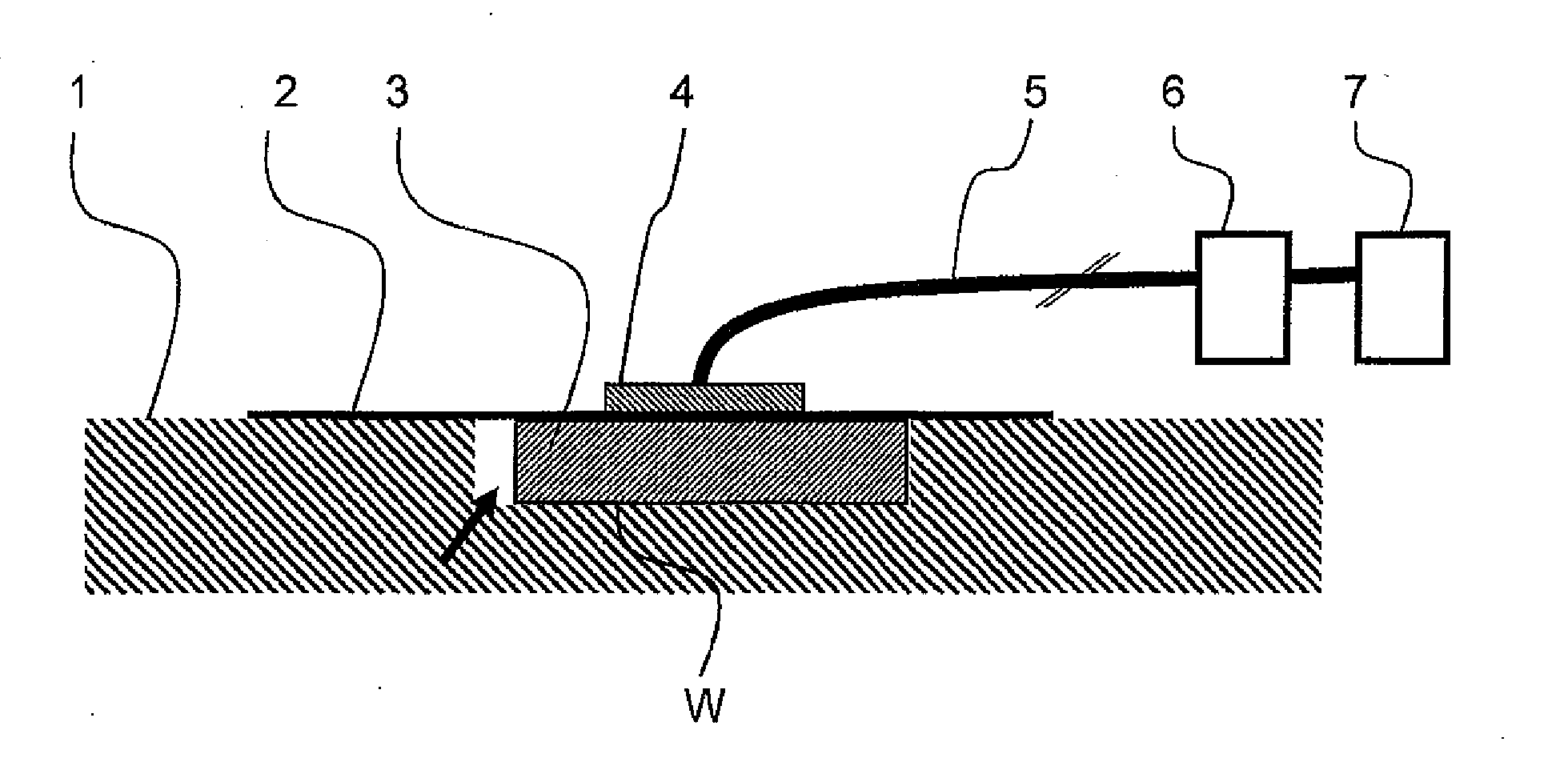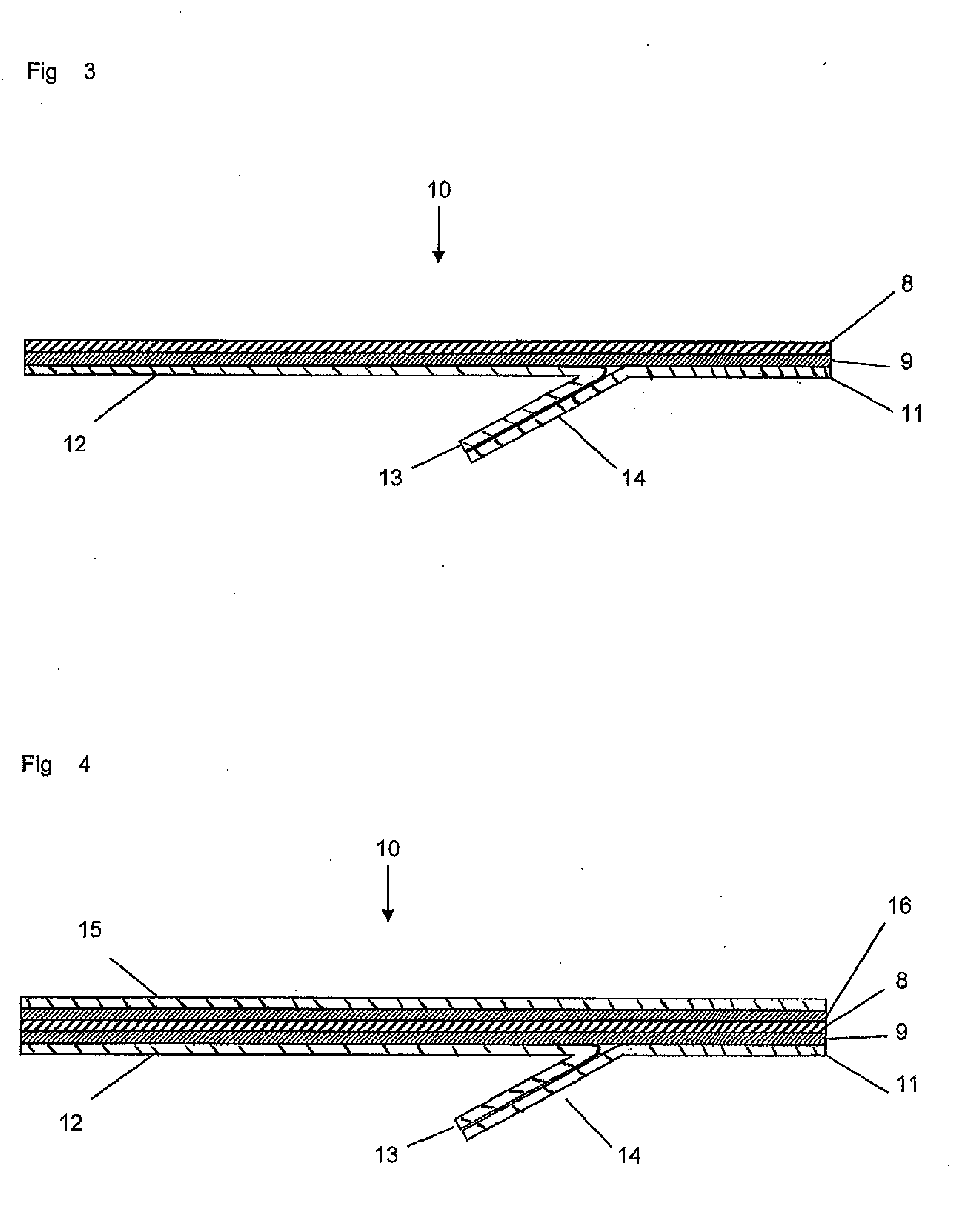Element for facilitating the cutting to size of a dressing for vacuum therapy of a wound
- Summary
- Abstract
- Description
- Claims
- Application Information
AI Technical Summary
Benefits of technology
Problems solved by technology
Method used
Image
Examples
Embodiment Construction
[0092]FIG. 1 shows a typical structure of a vacuum dressing applied to the wound. Devices of this type are known in many variations from prior art. The device comprises an air-impermeable cover material 2, a means for functional connection of the wound space to a source of vacuum located outside the cover material 7, a collection vessel for the wound exudate 6, and a liquid-permeable dressing 3, which is located in the wound space. Usually, the liquid-permeable dressing is cut to size by visual judgment. If a wound dressing that is insufficiently adapted to the size and shape of the wound does not fully fill the wound space, cavities can occur between the base of the wound W and the cover material 2 (indicated by an arrow in FIG. 1). Furthermore, a wound dressing which is too large may overlap the wound edge (not depicted in FIG. 1). The means for functional connection of the wound space to a source of vacuum located outside the cover material 7 comprises, in the example depicted he...
PUM
| Property | Measurement | Unit |
|---|---|---|
| Vapor pressure | aaaaa | aaaaa |
| Size | aaaaa | aaaaa |
| Transparency | aaaaa | aaaaa |
Abstract
Description
Claims
Application Information
 Login to View More
Login to View More - R&D
- Intellectual Property
- Life Sciences
- Materials
- Tech Scout
- Unparalleled Data Quality
- Higher Quality Content
- 60% Fewer Hallucinations
Browse by: Latest US Patents, China's latest patents, Technical Efficacy Thesaurus, Application Domain, Technology Topic, Popular Technical Reports.
© 2025 PatSnap. All rights reserved.Legal|Privacy policy|Modern Slavery Act Transparency Statement|Sitemap|About US| Contact US: help@patsnap.com



